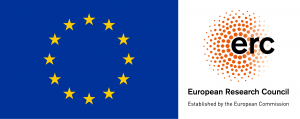Article – Jenny Ponzo and Gabriele Marino, “Modelizing epistemologies: organizing Catholic sanctity from calendar-based martyrologies to today’s mobile apps” (Semiotica 2021)

J. Ponzo and G. Marino, Modelizing epistemologies: organizing Catholic sanctity from calendar-based martyrologies to today’s mobile apps, in Semiotica, vol. , no. , 2021. (link)
Abstract
The Catholic concept of “sanctity” can be thought of as a “cultural unit” (Eco) composed of a wide variety of “grounds” (Peirce) or distinctive features. The figures of individual saints, i.e., tokens of sanctity, are characterized by a particular set of grounds, organized and represented in texts of different genres. This paper presents a semiotic study of texts seeking to offer an encompassing view of “sanctity” by listing all the saints and supplementing their names with a short description of their lives emphasizing the grounds characterizing each of them. The analysis focuses on a seminal liturgical text, the Martyrologium Romanum (1584–2004), and the first official encyclopedia of saints, the Bibliotheca Sanctorum (1961–2013), as well as a sample of digital texts and media such as websites and mobile apps. While the first text offers a dogmatic perspective on sanctity and saintly figures and the second offers a historical and culturological one, websites succeed in reconciling the two paradigms into a single syncretic form of interactive fruition in which the more up-to-date encyclopedic model subsumes the traditional calendar one and, in the case of apps, adds a glocal dimension, enhancing situated cognition. The analysis shows that the introduction of the encyclopedic genre and subsequent proliferation of digital repertoires is connected to a shift in the Catholic “episteme” (Foucault) of sanctity and a growing tendency to consider saints as not (only) religious characters and objects of cult, but (also) as historical individuals and components of a culture and, consequently, as suitable objects of critical discourse.

